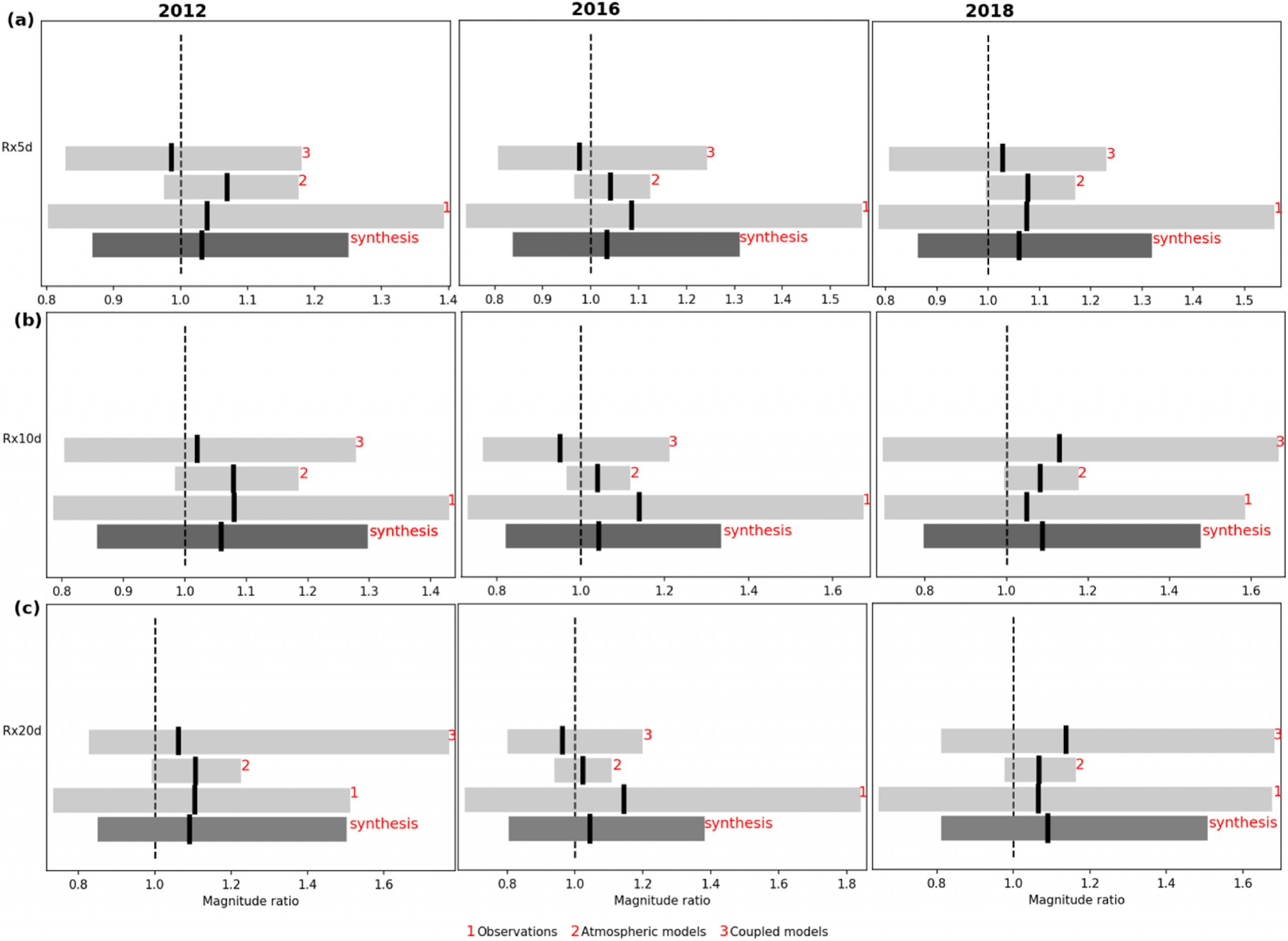Attribution of the human influence on heavy rainfall associated with flooding events during 2012, 2016, and 2018 March-April-May seasons in Kenya.
Kenya received severe rainfall during the March-April-May (MAM) rainfall season in 2012, 2016, and 2018, resulting in human and cattle deaths, the devastation of infrastructure and property, bursting of riverbanks, submerging of farmlands, and the introduction of isolated cases of water-borne infections. The Authors hope to measure how human-induced climate change has changed the magnitude of heavy rainfall during these seasons. They conduct a probabilistic attribution study utilizing three techniques, two observational datasets, and two independent climate model experiment setups. They compare the magnitude of maxima observed in MAM 2012, 2016, and 2018 to the magnitude of maxima in a pre-industrial climate using three distinct seasonal heavy rainfall indices: maximum consecutive 5-day, 10-day, and 20-day rainfall (with little or no anthropogenic influence). They discover a change toward the intensification of extreme rainfall in today’s climate, however, these increases are not always statistically distinct from their preindustrial estimates of magnitudes.
